Key takeaways
- Ableton Live features a user-friendly interface that encourages creativity and real-time experimentation.
- The non-linear workflow allows musicians to rearrange clips and explore ideas spontaneously, enhancing productivity.
- Real-time collaboration tools foster a sense of community and enable remote jam sessions among musicians.
- Creating a diverse portfolio in Ableton showcases both completed works and creative processes, attracting potential collaborators.
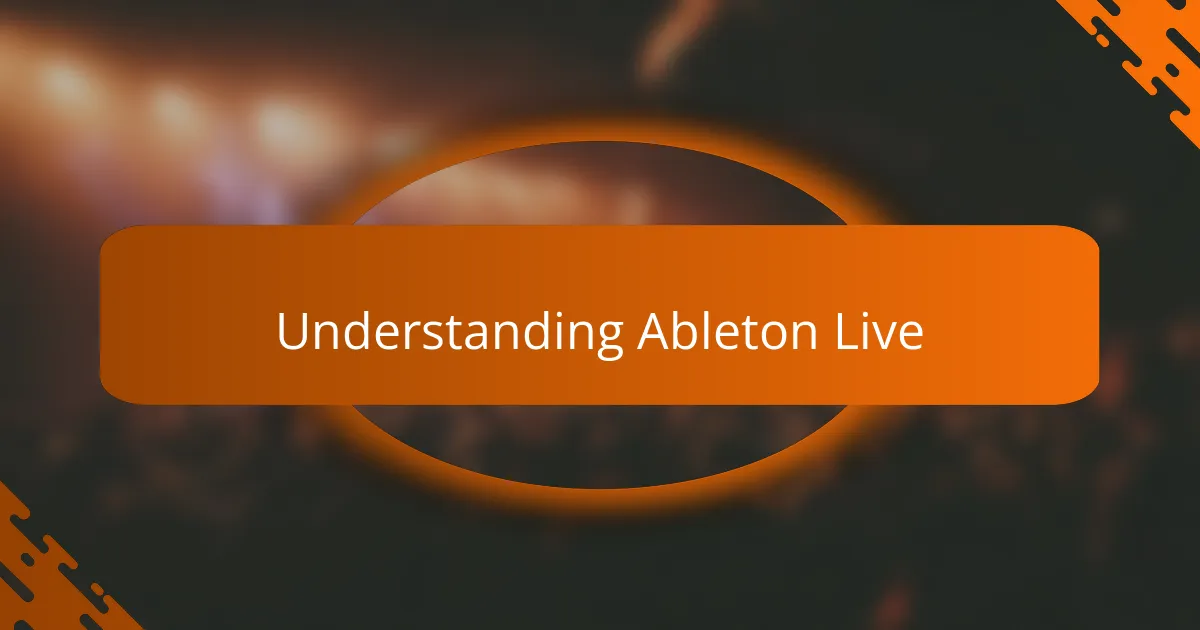
Understanding Ableton Live
Ableton Live is an incredible tool for musicians looking to explore creativity without boundaries. I’ve often found it liberating to experiment with sounds and arrangements in a non-linear fashion. The interface encourages spontaneity, allowing me to dive right into my ideas without getting bogged down in complicated workflows.
With its unique session view, Ableton Live allows for real-time experimentation, which I find invigorating. I remember the first time I laid down a melody and instantly triggered different loops; it felt like I was conversing with my music. This immediate feedback transforms the creative process into a playful dialogue, where unexpected sounds can lead to delightful discoveries.
- User-friendly interface that promotes quick learning and creativity.
- Non-linear workflow allows for flexible arrangements.
- Real-time collaboration tools enhance the creative process.
- Extensive audio and MIDI capabilities cater to various genres.
- Rich library of built-in sounds and effects for instant inspiration.
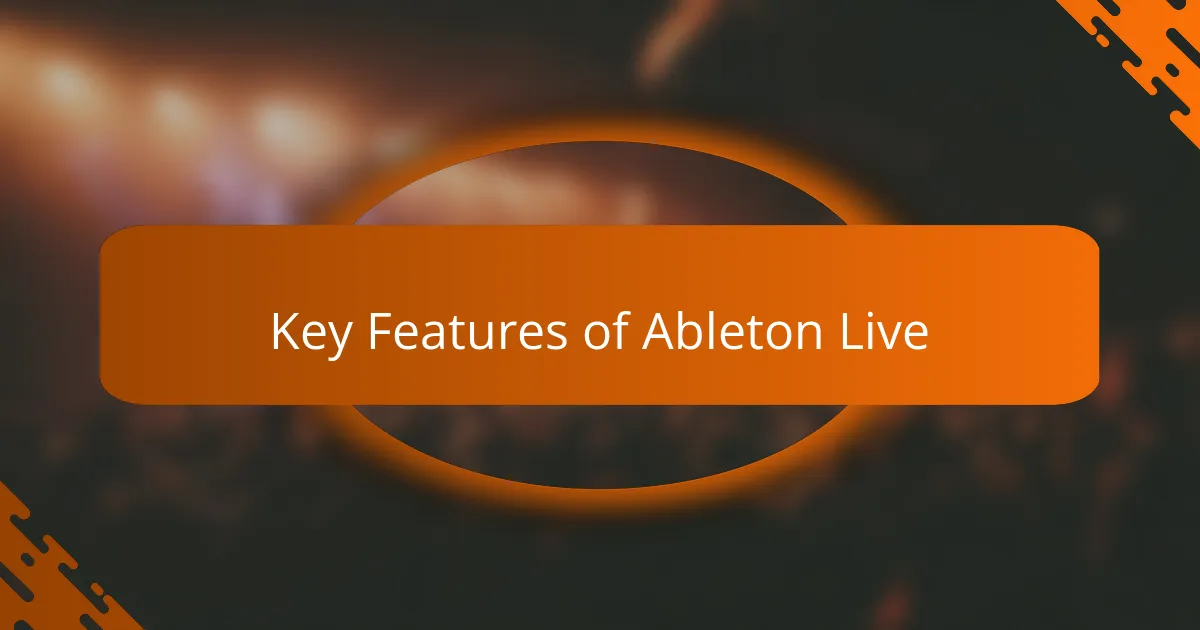
Key Features of Ableton Live
Ableton Live stands out to me for its versatility and user-friendly interface. I’ve found that whether I’m composing music, performing live, or mixing tracks, the software adapts effortlessly to my needs. I remember my first experience with Ableton—everything felt intuitive, and the creative flow just clicked. It’s layered with features that truly cater to both the studio and stage.
Some key features that I appreciate include:
- Session View: This unique interface allows for flexible composition and spontaneous performance, letting me experiment with ideas on the fly.
- Clip Launching: I love how I can trigger audio and MIDI clips in real time, which adds a dynamic element to my live shows.
- Push Integration: Using Ableton’s MIDI controller made my workflow smoother; the tactile controls make it feel like I’m creating music directly with my hands.
- Max for Live: This feature lets me customize instruments and effects, enhancing the sound palette and enabling endless possibilities for creativity.
- Built-In Instruments and Effects: From synths to drum racks, I often lean on these tools to inspire unique sounds and textures in my projects.
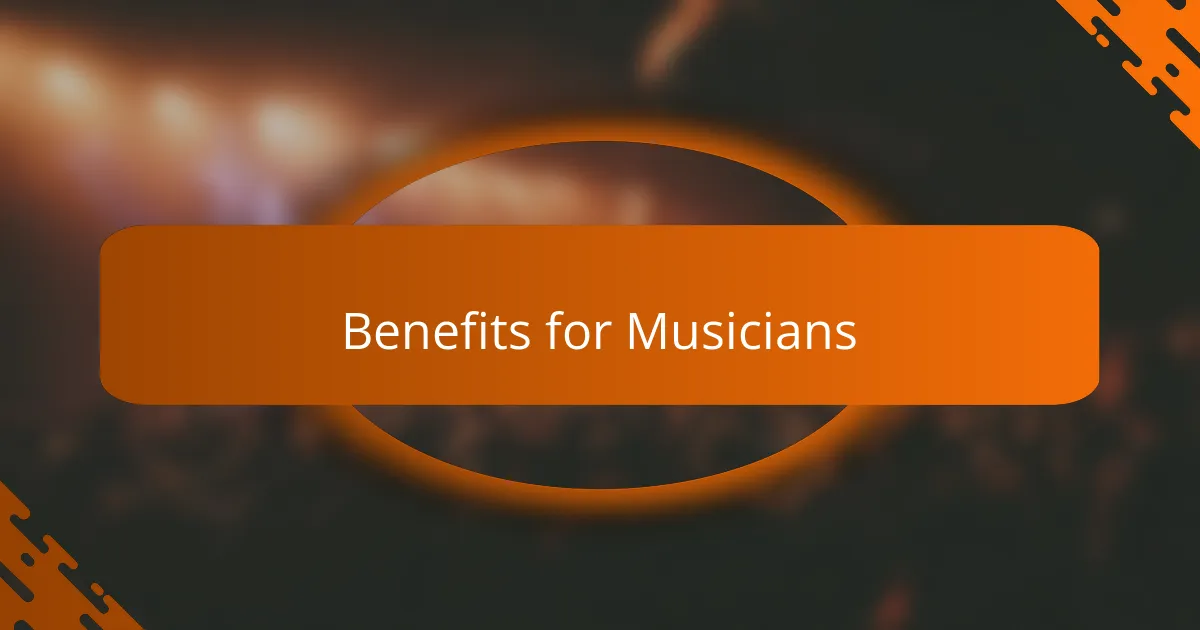
Benefits for Musicians
When it comes to the benefits of using Ableton Live, one of the most significant is its user-friendly interface. I recall sitting down for the first time, feeling slightly overwhelmed but quickly realizing that I could navigate the software without frustration. This ease of use really shines when I’m working on new projects—whether I’m laying down beats or tweaking sounds, I can dive right in, allowing my creativity to flow without the barrier of a steep learning curve.
Another fantastic aspect is the non-linear workflow, which has completely transformed how I create music. I can rearrange clips, experiment with different sounds, and explore ideas all in real-time. Once, during a late-night session, a simple chord progression evolved into a rich tapestry of sounds—something I never would have discovered in a traditional linear format. This flexibility not only keeps my ideas fresh but also enhances my overall productivity as a musician.
I can’t overlook the real-time collaboration tools embedded in Ableton Live, either. There’s something special about inviting fellow musicians to jam remotely, exchanging ideas and building off each other’s creativity. I remember a session where we quickly layered our individual tracks, feeding off one another’s energies. It truly felt like a sonic conversation, and that sense of community is invaluable for personal growth as an artist.
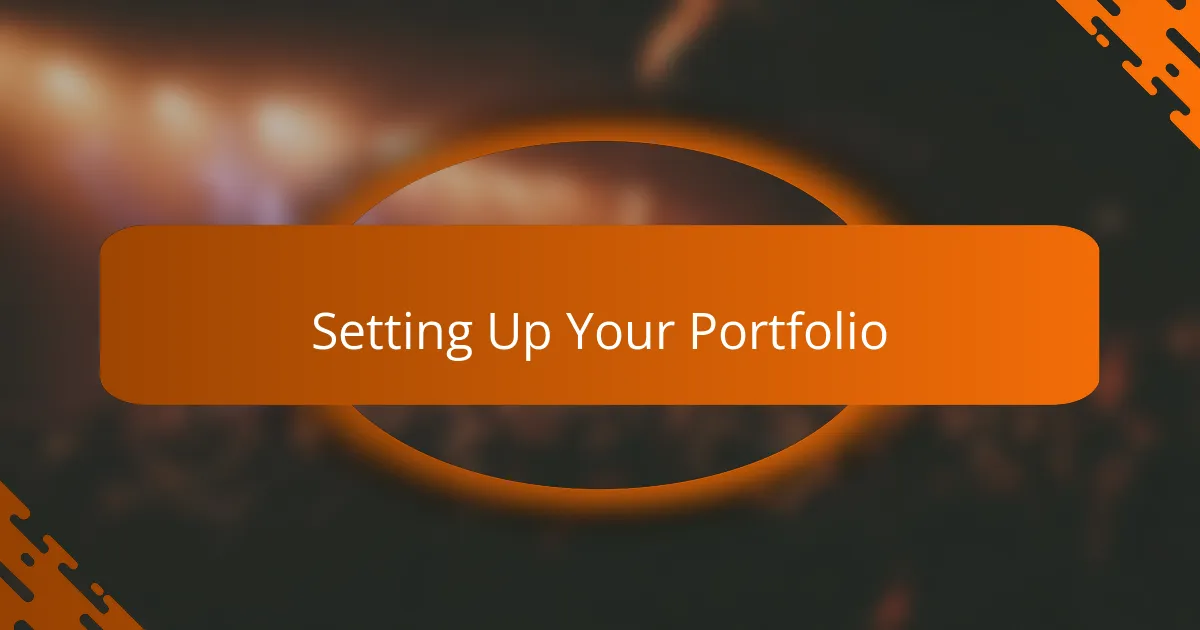
Setting Up Your Portfolio
Setting up your portfolio in Ableton Live is an essential step for any musician. I’ve found that showcasing your best work not only represents your skills but also establishes your unique sound and identity as an artist. When I first started, I focused on organizing my tracks by genre, which helped potential collaborators quickly grasp my versatility.
One of the key facts to remember is that your portfolio should highlight a mix of completed projects and works in progress. This approach gives insight into your creative process. I still recall how sharing a rough draft of a track led to a collaboration that transformed it into something incredible.
Here’s a comparison table that outlines the advantages of different portfolio setups in Ableton Live:
| Portfolio Type | Advantages |
|---|---|
| Complete Tracks | Showcases polished work and technical skill. |
| Works in Progress | Illustrates your creative journey and openness to collaboration. |
| Genre-Specific Collections | Highlights versatility and allows for targeted opportunities. |
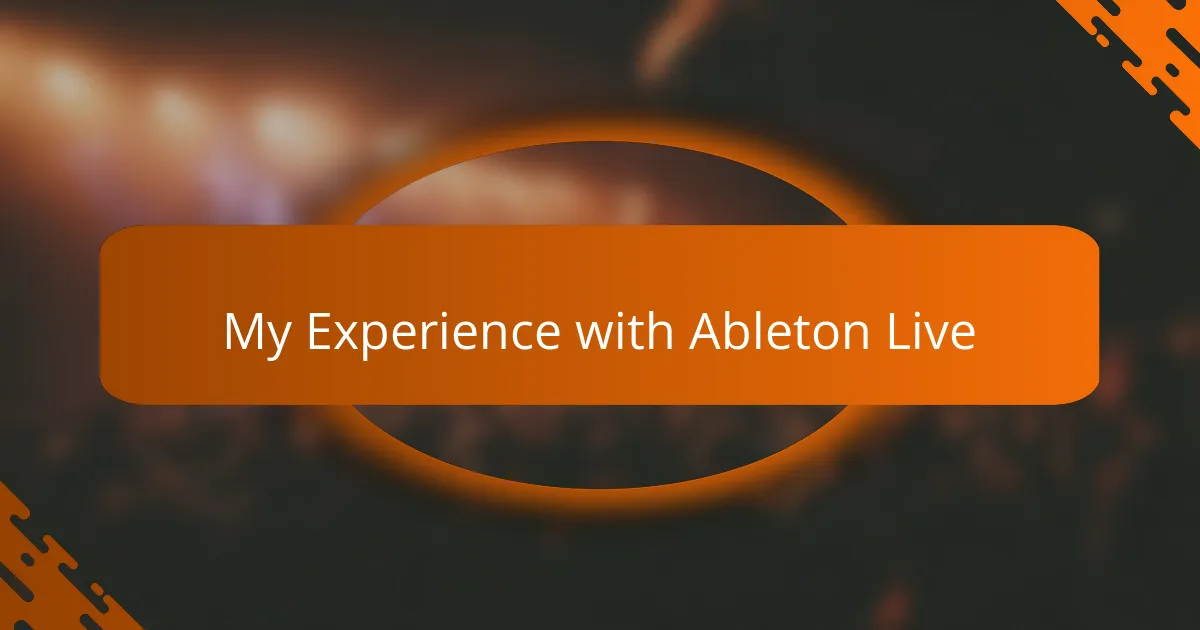
My Experience with Ableton Live
When I first started using Ableton Live, I was both excited and intimidated. The intuitive interface felt refreshing, but diving deep into its features was a challenge. However, once I got the hang of it, my creativity soared. I remember completing my first track and feeling an exhilarating surge of accomplishment; the software allowed me to experiment freely without the confines of traditional recording methods.
Over time, I discovered that Ableton’s session view was a game changer for my workflow. It allowed me to improvise and arrange ideas on-the-fly, which made every practice session feel like a new adventure. Each time I opened the software, I felt a mix of anticipation and possibility.
- The drag-and-drop feature simplifies the process of adding samples and instruments.
- Real-time audio manipulation is incredibly satisfying and opens up unique creative pathways.
- The extensive library of built-in sounds is beneficial for quickly testing out ideas.
- The MIDI sequencing capabilities elevate my compositions significantly.
- Ableton Live fosters an environment where experimentation feels natural and rewarding.
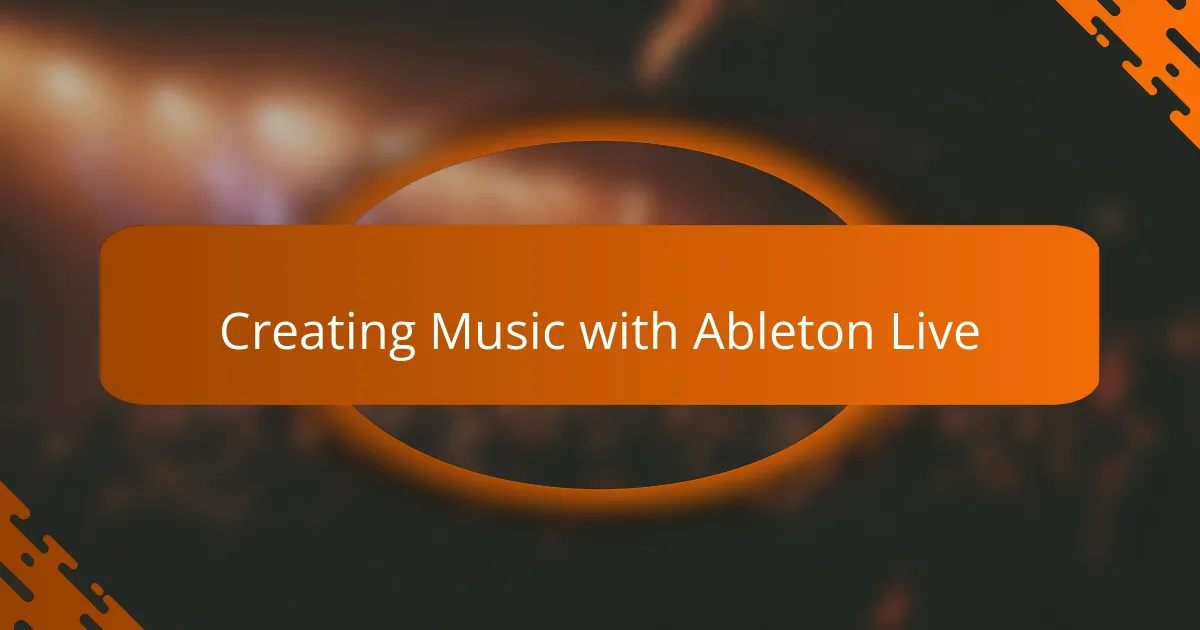
Creating Music with Ableton Live
Creating music with Ableton Live feels like opening a treasure chest full of creative possibilities. I vividly remember the first time I used the session view. It was late at night, and I started layering sounds, each one clicking into place like a puzzle. The energy was electric—suddenly, it wasn’t just about following a set path; it was about discovering new directions. Have you ever had that moment when an unexpected sound ignites your inspiration? With Ableton, that moment can happen in an instant.
One aspect I genuinely appreciate is the seamless integration of MIDI and audio. I often find myself diving into spontaneous jam sessions where I can tweak MIDI notes on the fly. Just last week, I adjusted a melody while the beat played, and it transformed the entire vibe of the track. It’s empowering to manipulate sounds so fluidly, giving you the chance to capture those fleeting ideas before they slip away. It makes me wonder—when was the last time you felt that rush while creating?
The rich library of built-in sounds has often served as a lifeline when I’m facing creator’s block. I still recall one day when I opened up the instrument rack, and a single synth pad led me down a rabbit hole of inspiration. Within hours, I had crafted a nearly complete track, all sparked by that initial sound. Ableton invites you to experiment, creating a space where every little tweak can lead to something extraordinary. Don’t you just love it when the software feels like an extension of your own creativity?